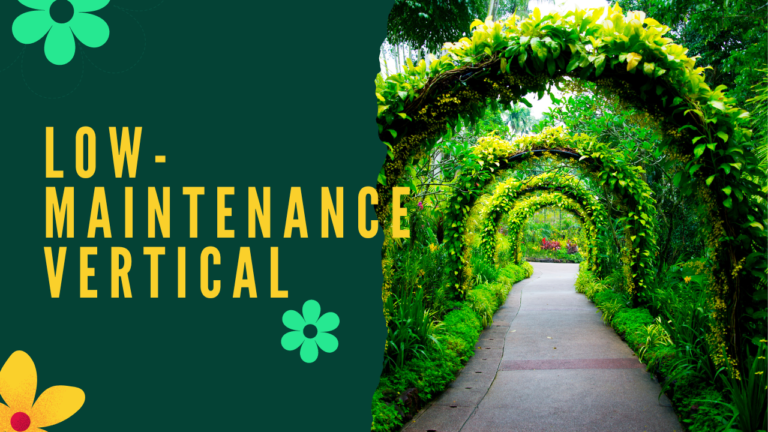Innovative Vertical Gardening Ideas for Urban Dwellers: A Comprehensive Guide
Urban living often means limited space, but that doesn’t mean you have to give up on having a garden. With these innovative vertical gardening ideas for urban dwellers, you can transform small spaces into lush, green havens. Vertical gardening not only maximizes space but also adds a unique aesthetic appeal to your home.
Why Choose Vertical Gardening?
Vertical gardening offers several benefits, especially for urban dwellers:
- Space Efficiency: Ideal for small apartments and balconies.
- Aesthetic Appeal: Adds a beautiful, green touch to walls and fences.
- Health Benefits: Improves air quality and provides fresh produce.
- Sustainable Living: Promotes eco-friendly practices and reduces carbon footprint.
Planning Your Vertical Garden
Assessing Your Space
Before you start, evaluate your available space:
- Wall Space: Identify walls or fences that can support vertical planters.
- Sunlight: Determine how much sunlight the area receives daily.
- Weight Capacity: Ensure structures can support the weight of planters and plants.
Choosing the Right Plants
Selecting suitable plants is crucial for a successful vertical garden. Here are some recommendations for innovative vertical gardening ideas for urban dwellers:
- Herbs: Basil, parsley, mint, and thyme.
- Vegetables: Lettuce, spinach, cherry tomatoes, and peppers.
- Flowers: Petunias, pansies, and marigolds.
- Succulents: Echeveria, jade plant, and string of pearls.
Innovative Vertical Gardening Ideas for Urban Dwellers
1. Vertical Wall Planters
Wall planters are a popular choice for urban gardeners. They come in various materials like wood, metal, and plastic, and can be mounted on any sturdy wall.
- DIY Option: Use recycled pallets to create a rustic vertical planter.
- Ready-Made: Purchase modular wall planters that are easy to install.
2. Hanging Gardens
Hanging gardens are perfect for balconies and patios. They can be made using hanging baskets, pots, or even old bottles.
- Macrame Hangers: Stylish and functional, these hangers are perfect for small pots.
- Hanging Gutter Planters: Repurpose old gutters to create a tiered hanging garden.
3. Tower Gardens
Tower gardens are vertical systems designed to grow a large number of plants in a small footprint. They are ideal for growing vegetables and herbs.
- Hydroponic Towers: Use water and nutrients to grow plants without soil.
- DIY PVC Pipe Towers: Drill holes in PVC pipes to create multiple planting sites.
4. Trellis Systems
Trellises are great for climbing plants and can be installed against walls or freestanding.
- Wooden Trellis: Classic and sturdy, perfect for beans, peas, and cucumbers.
- Metal Trellis: Modern and durable, suitable for heavier plants like squash.
5. Pocket Planters
Pocket planters are fabric or felt pockets that can be mounted on walls. They are great for herbs, flowers, and small vegetables.
- DIY Felt Pockets: Sew pockets from felt fabric and attach them to a frame.
- Commercial Options: Buy pocket planters designed for easy installation.
6. Pallet Gardens
Recycled pallets can be transformed into vertical gardens with minimal effort. They are perfect for herbs, flowers, and succulents.
- Horizontal Pallets: Lay pallets horizontally against a wall and fill with soil and plants.
- Vertical Pallets: Stand pallets upright and plant in the gaps.
Setting Up Your Vertical Garden
Soil and Planting
Use high-quality potting mix suitable for the types of plants you are growing. Fill planters with soil, leaving enough space for the plants to grow. Ensure proper drainage to prevent waterlogging.
Watering
Vertical gardens require consistent watering, especially the top plants. Consider using a drip irrigation system for even and efficient watering.
Light and Temperature
Most plants need at least 6 hours of sunlight daily. If your space doesn’t get enough natural light, consider using grow lights. Maintain a consistent temperature to promote healthy growth.
Maintaining Your Vertical Garden
Pruning and Harvesting
Regular pruning keeps plants healthy and encourages growth. Harvest herbs and vegetables frequently to promote new growth.
Pest Control
Monitor your plants for pests and diseases. Use natural pest control methods like neem oil or insecticidal soap to keep your garden healthy.
Fertilizing
Feed your plants with a balanced, water-soluble fertilizer every few weeks to ensure they get the necessary nutrients.
Advanced Vertical Gardening Techniques
Hydroponics
Hydroponics is a soil-less growing method that uses nutrient-rich water to grow plants. It’s perfect for vertical gardening and maximizes space and resources.
- Hydroponic Towers: These systems use vertical columns to grow multiple plants in a small area.
- DIY Hydroponic Systems: Create your own hydroponic setup using PVC pipes and a water pump.
Aquaponics
Aquaponics combines hydroponics with aquaculture (fish farming). Fish waste provides nutrients for the plants, and the plants filter the water for the fish.
- DIY Aquaponic Systems: Set up a small aquaponic system using a fish tank and grow beds.
- Commercial Systems: Purchase ready-made aquaponic kits designed for urban spaces.
Final Thoughts on Innovative Vertical Gardening Ideas for Urban Dwellers
Incorporating these innovative vertical gardening ideas for urban dwellers can transform your small space into a lush, productive garden. Whether you’re growing herbs, vegetables, or flowers, vertical gardening allows you to make the most of your available space while promoting sustainable living practices. With a bit of creativity and care, your vertical garden can thrive and bring the joys of gardening into your urban lifestyle.
FAQs
1. What are the best plants for vertical gardening in urban spaces?
Herbs like basil, mint, and thyme, vegetables like lettuce and cherry tomatoes, and flowers like petunias and marigolds are excellent choices for vertical gardens.
2. How often should I water my vertical garden?
Watering frequency depends on the type of plants and the environment. Generally, vertical gardens need consistent watering, especially the top plants. Consider using a drip irrigation system for even watering.
3. Can I create a vertical garden indoors?
Yes, you can create a vertical garden indoors. Ensure your plants receive enough light by placing them near windows or using grow lights.
4. What materials can I use for DIY vertical planters?
You can use recycled materials like pallets, PVC pipes, old gutters, and felt fabric to create DIY vertical planters.
5. How do I prevent pests in my vertical garden?
Monitor your plants regularly for signs of pests. Use natural pest control methods like neem oil or insecticidal soap to keep pests at bay.
Vertical gardening is a fantastic way for urban dwellers to enjoy the benefits of gardening despite limited space. With these innovative vertical gardening ideas for urban dwellers, you can create a green oasis in your home, improve your well-being, and contribute to a more sustainable lifestyle. Happy gardening!





